I recently had the good fortune of participating in a conference held in Exeter, England, by the Center for Process Studies inspired by plasma physicist Robert Temple’s book, A New Science of Heaven. I made new friends and learned more about the fascinating overlap of plasma, UAPs, and clairvoyant contact with cosmic beings. My talk sought to bridge Rudolf Steiner’s claims about warmth as another state of matter, its connection with the etheric world, and how both are bound up with the overall tenor of spiritual exercise he believed was most suitable for the future of human evolution. The conference organizers intend to create a special issue for publication by assembling written versions of the talks presented. I share mine here in hopes that fellow interlocutors, particularly those with a good knowledge of Steiner and his ideas about warmth, might have some constructive feedback for my revision. All feedback is welcome.
My point of departure for this essay is the suggestion that plasma physics and the cosmic medium of communication weaving between stars and vast regions of interstellar space it unveils might provide a scientific basis for both understanding and reintroducing the premodern experience of knowledge as a relational, oracular, and self-implicating process. Following the sixteenth century alchemist and proto-scientist Paracelsus, I hold up the image of Vulcanus—the divine blacksmith whose name in the more widely known Greek mythology was Hephaestus—and his forge as an emblem for psycho-spiritual techniques (often referred to as “protocols” today) of self-cultivation that may permit contact with nonhuman intelligences (or NHI for short).
As Paracelsus writes, “What is accomplished by fire is alchemy. … And he who governs fire is Vulcan… What the eyes perceive in herbs or stones or trees is not yet a remedy. … First it must be cleansed of the dross, then it is there. This is alchemy, and this is the office of Vulcan; he is the apothecary and chemist of the medicine.”[1] “But to understand this art,” he continues further on, “one must above all know that God has created all things; and that He has created something out of nothing. This something is a seed, in which the purpose of its use and function is inherent from the beginning. And since all things have been created in an unfinished state. … Vulcan must bring all things to their completion.”[2] Thus, for Paracelsus, Vulcanus or Vulcan referred to a transpersonal intelligence and creative power of transformation aflame in the human soul, which, when cultivated, illuminates the same reality shining from within the phenomena of the world as a living potential that groans for eschatological perfection. Though such a notion might seem fanciful to those of us conditioned by centuries of scientific materialism and its emphasis on atomic matter, Paracelsus’ conception of Vulcan is strikingly resonant with the consensus among physicists today that over 99% of the observable cosmos is made up of radiant plasma activity. Some scientists speculate that human beings might also be haloed by plasma dynamics in the form of a “biofield,” or a dynamic field of information that orchestrates various life processes in the atomic body. Robert Temple has referred to this hypothetical field as the “bioplasma body” and suggests that it may even provide a means for interfacing with the currents of information flowing through the cosmic plasma continuum, further corroborating premodern accounts of realities symbolized by Vulcan. I’ll be drawing on this idea, but more along the lines of claims made by the esoteric philosopher and allegedly clairvoyant researcher, Rudolf Steiner, by conceiving the fourth state of matter as pointing to the threshold between physical reality and the upper echelons of inward spirit; rather than claim that plasma encompasses the entirety of spirit, one might instead speculate that it is what Steiner refers to as the “etheric body,” variously referred to as the life body or the body of formative forces—the third densest member of the human makeup (next to the fourth and most dense, the physical body, plasma included), that informs the biofield of the atomic body. The plasma activity of the human biofield is from this point of view the footprint of a nonphysical dynamism. From a physics perspective, elemental fire or warmth as Steiner put it more broadly, is energy in transit due to temperature differentials introduced by the dynamics of distinct entities—from the outpouring energy of the Sun to the molecular forges of our mitochondria. Warmth, or the element of fire, is thus essentially activity—and, as such, may be perceived by the clairvoyant as the volitional emanation of an invisible intelligence. According to Steiner, the effect of warm inner-soul processes such as volition, enthusiasm, and genuine love are not merely perceptible through the etheric body, but, when intentionally cultivated, act upon and reshape it. Thus, plasma phenomena may be read as etheric effects of inner-soul warmth made perceptible to the senses (or their technological extension), rendering outer warmth as the most subtle layer of physical reality—the bridge between the material and the immaterial.[i] Assuming the world was created by a transcendent divinity who lovingly sustained and pervaded the immanent plane with its immaterial fires of wisdom and creative potentiality, Paracelsus took for granted that one must forge their own subtle bodies in the divine image by walking a path of virtue—cultivating a contemplative mind, fidelity to the Good, True, and Beautiful, equanimity of feeling, and a generous, compassionate heart. Only through such self-cultivation could one interface with the divine Presence and partake of its noetic light—a path that also required care for the ensouled body as an antenna-like instrument.
As Paracelsus’ predecessor Plato once wrote in his cosmogonic dialogue Timaeus, “the god invented sight and gave it to us so that we might observe the orbits of intelligence [in the sky]. … [and] once we have come to know them and to share in the ability to make correct calculations according to nature, we should stabilize the straying revolutions within ourselves by imitating the completely unstraying revolutions of the god.”[3] Both astronomy and gymnastics formed part of the original Academic method of self-cultivation for microcosmic attunement, acts of will that work with inner, individuated fire to forge an etheric body which harmonizes with the divine fire that animates the cycling macrocosm. Thus, this practice of attunement included not only inward refinement, but also a deep familiarity with the world without—the multiform macrocosm recognized as the temple of God. As the quotes from Plato and Paracelsus have implied, the One could only be known by way of intimacy with the Many—the diversity of lesser lights or intelligences constituting the cosmos—gods, angels, elemental spirits. The wisdom of Socrates was, after all, attributed by him (at least in Plato’s telling) to the oracular guidance of his own personal daimon. For pre and nonmodern thinkers, to be wise required that one rightly relate to this diversity of beings, to understand the ontological significance of each in the larger cosmic ecology. By comparison with today’s more abstract conception of knowledge as the accumulation of information, this relational and magical wisdom served cosmological orientation and addressed the most immediate concerns of everyday life. For instance, these lesser spirits, whether we call them angels or gods, could be propitiated for specific benefits and protections characteristic of their natures, including blessed pursuits of invention and intellectual illumination or discovery. In accordance with the relational and self-implicating epistemology I’ve described thus far, the supplicant would necessarily make themselves adequate to the propitiated spirit by likening themselves to its essence and patiently awaiting its favor.
As the religious studies scholar
has explored in her books American Cosmic and Encounters, the history of space-technology invention and the adjacent field of ufology both involve accounts of contact with NHI that closely resemble pre and nonmodern ways of knowing. Her examples are numerous, but I will limit myself to her extensive account of the pseudonymous “Tyler,” an enigmatic yet impressively credentialed aerospace and biotech innovator who began at NASA as a teenager, contributed to numerous space shuttle missions (including Challenger-related work), and now holds over 40 patents for biomedical technologies, many of which (or perhaps all, I am not entirely sure) he seems to credit to the oracular inspiration of a nonhuman, cosmic intelligence that he can only commune with if he maintains a strict regimen of protocols: abstinence from caffeine, good hydration, contemplative isolation, as well as more familiar spiritual protocols such as yoga and prayer. Significantly, Tyler emphasizes the importance of exposing himself to sunlight for facilitating the “downloads” he receives from the cosmic intelligence.One of the most memorable moments in American Cosmic comes when Tyler recounts a conversation with his retired mentor from the U.S. space program who told him that the next major discovery in their field would come not from engineering or physics, but from Pasulka’s discipline: religious studies. Scientific materialism has reached its limit, the mentor explained; to break through, one would need to turn to mysticism, religion, and consciousness studies. The next frontier of science and technology—the development of mind-machine interfaces—would depend on insights drawn from these domains, suggesting that religious protocols for self-cultivation and communion with NHI might hold the keys.[4]How might this be? One speculative answer is that if plasma-based technologies can be used to design interfaces that operate at the threshold between mind and matter, their effectiveness may hinge on the involvement of human beings capable of attuning themselves to and manipulating subtle energy dynamics. If, as Steiner held, warmth marks the boundary between physical substance and the more inward, etheric realm of formative forces, then spiritual exercises for self-cultivation may function as calibration protocols—bringing the human psychophysical system into a state of heightened coherence and receptivity. In such states, oracular transmissions could be received that might inform the invention and eventual operation of plasma-based mind-machine interfaces.
While contemplative protocols exist across the world’s religious traditions, I focus here on those developed by Steiner because he carefully designed his spiritual exercises for the post-scientific consciousness of our times. For Steiner, scientific materialism was not simply a metaphysical mistake but a phase in the evolution of consciousness, a kind of symptomatic expression of the the gradual polarization of subject and object in human experience. Before the subject–object distinction came about, the world was experienced as alive with spiritual intelligences from which the observer was not yet clearly differentiated; by contrast, today’s predominant materialist consciousness typically perceives objects as separate from the self, as mute surfaces, fit for analysis and control, and is not usually conscious of the ever-present concourse of spiritual beings. Though alienating, this shift also enabled precise, non-distorting observation (i.e., the scientific method) and a freer, more individualized will—conditions Steiner saw as prerequisites for a new kind of relational intimacy: an I–Thou relation between humans and between humans and the more-than-human. Drawing from Johan Wolfgang von Goethe’s participatory method of science, Steiner proposed that the ego or the self should not to be blotted out, but refined—transformed into an instrument of exact spiritual perception.
Although no experimental studies yet examine the physiological markers of Steiner’s method directly, evidence from similar “autogenic” meditation practices—self-directed techniques involving focused attention, the repetition of calming mantras, various forms of structured visualization, as well as the cultivation of warm emotions like gratitude—suggests they can produce highly integrated psychophysical states. In such states, brain activity becomes synchronized, heart rhythms coherent, and heart rate variability high—indicators of a stable yet dynamic psychophysical system, a well-suited instrument for rigorous observation of consciousness-dependent realities.
These findings can be read as corroborating the rationale Steiner claimed for his own meditative methodology, and, significantly, he insisted on the cultivation of inner warmth as essential for this training if the capacities it awakens are to be ethically oriented. More than just a sensory experience, warmth was held by Steiner to be in truth a legacy of the very first epoch of cosmic evolution—referred to as “Old Saturn”—wherein warmth alone existed, gifted through angelic sacrifice, as the primordial condition from which all later matter, life, and organically-based consciousness would arise through condensation. Through successive phases of cosmic evolution, universal warmth has increasingly folded in on itself, generating self-organizing systems like plasmoids and, later, autopoietic life, culminating in the autonomy of alienated modern human self-consciousness.
But for Steiner, evolution doesn’t stop here: rather, just as we have awakened into self-consciousness through the grace of universal warmth, so might we freely pay that gift forward by emanating our own inner soul warmth—now individuated, ennobled, and radiant—back into the cosmos, forging a new, wakeful unity in the eschatological epoch of cosmic evolution he referred to as the “Vulcan” epoch. “Morality could only begin on Earth,” says Steiner of our current cosmic epoch, with morality here referring to the capacity for I-Thou relations. “It will reach its culmination during the Vulcan stage,” he continues, “when the purified I—the I that has been purified by morality and entirely moulded by it—will be the only thing that pulsates in the fiery processes of the blood. Then the forces of the human ego and the forces of morality will have become one and the same thing. Then the blood of mankind—in other words, the warmth of the blood, for matter is just an external sign of this warmth—will have become the holy fire of Vulcan.”[5]
Steiner designed hundreds of mantras and inner exercises (often for particular individuals), but given our context, I’ve selected what contemporary anthroposophists refer to today as the “warmth meditation” as an apt example of how protocols of self-cultivation might allow human beings to actively engage with the etheric-plasma interface of the universe. First given in 1923 to anthroposophical medical students and physicians, Steiner designed the Warmth Meditation to help healers become instruments of attuned perception, whose sympathetic warmth might allow an intuitive perception of the individual patient’s specific needs and stimulate their own autopoietic process of restoration. Framed around the question “How can I find the good?”, the exercise begins with the practitioner contemplating why neither thinking nor feeling can of themselves produce ethically creative action, but only a self-engendered will for the Good, which lives in the warmth of desire. “I can want the good,” as the contemplation goes, “and wanting supplies myself. My self works in the warmth ether of my body. So it is in warmth that I can physically realize the good.”[6] The practitioner then moves on to the actual meditation wherein one generates a threefold sequence of somatic visualizations, stoking fiery desire for the Good and permeating the physical regions of thought and feeling with its effects: first, the experience of light in the region of the heart with the words “I feel light in my warmth”; second, the generation of a subtle vibration in the solar plexus area which then rises to the head and spreads throughout the rest of the body, accompanied by the words, “I feel the sounding of world substance in my warmth”; and third, an experience of aliveness in the head with the words “I feel the life of the world in the warmth of my head,” which then descends and spreads throughout the rest of the body.
Through this sequence the mediant aims to artifice cosmic impressions—noetic light, harmonic resonance, and life—such that, through many repetitions, actual organs might eventually be forged for the perception of objective, yet consciousness-dependent realities beyond the fabulations of the insular ego. Because warmth flows without boundary, it can enable a mode of perception that spreads beyond the confines of the self; love of the Good and careful attention to the other constitutes an epistemic orientation whereby one knows by merging with the Thou one seeks to know. According to Steiner, this willful tuning of warmth activity reshapes the etheric body according to the auspices of the conscious I—the free agent—and, if that soul is genuinely aligned with the Good beyond being, may permit an enhancement of perception such that we might one day pass through the epoch of materialism and begin to reintegrate with the spiritual cosmos and all its denizens in full self-consciousness.
In a lecture from May 1921, Steiner claimed that at the end of the 19th century a distinct group of supersensible beings had begun descending to our planet from a nonphysical abode surrounding the Earth, seeking relationship with human souls prepared to receive them. He refers specifically to “Supermen of Vulcan”: advanced nonhuman intelligences whose state of development may portend what humanity itself is destined to become.[7]
Though largely unrecognized, Steiner suggests these Vulcan beings are already at work on the periphery of human consciousness with the intent to help us evolve, providing inspirations for Steiner’s own work, for instance, and perhaps the work of those like the pseudonymous Tyler. One might speculate whether certain anomalous phenomena—like those now referred to as UAPs—represent distorted or partial perceptions of their presence, appearing at the threshold where spiritual activity presses into the physical world through light, warmth, and the electromagnetic undulations of plasma. If, Vulcan, as Paracelsus envisions, is the cosmic “apothecary and chemist of the medicine” practiced by the healer, then perhaps the gifts the beings Steiner designates by the same name have a similar aim—to facilitate human beings in realizing the healing bridge from materialistic enclosure to a new global cosmism defined by the advent of I-Thou relations. “And,” to echo Paracelsus once more, “since all things have been created in an unfinished state, Vulcan must bring all things to their completion,” suggesting that our visitors may come heralding the world’s highest, potential—an eschatological promise burning on the horizon of the future: the holy fires of the Vulcan epoch, when the fallen, sundered world is made whole once more through the forge of divine Love.
[1] Paracelsus, Paracelsus: Selected Writings, 93.
[2] Paracelsus, 144–45.
[i] See Seth Miller’s wonderful “The Elements as an Archetype of Transformation: An Exploration of Earth, Water, Air, and Fire,” (master’s thesis, John F. Kennedy University, March 2008). https://www.academia.edu/168754/The_Elements_as_an_Archetype_of_Transformation_An_Exploration_of_Earth_Water_Air_and_Fire
[3] Plato, Timaeus, (47b–c).
[4] D. W. Pasulka, American Cosmic.
[5] Steiner, The Riddle of Humanity, GA 170. Lecture IV, August 5, 1916, Dornach, https://rsarchive.org/Lectures/GA170/English/RSP1990/19160805p01.html, para. 38.
[6] Steiner, Meditation for an Anthroposophical Doctor, GA 316. For Helene von Grunelius, Fall 1923, Dornach. Translated by Steiner Online Library. https://rsarchive.org/Lectures/GA316/English/SOL2024/Meditation.html.
[7] Steiner, “A Picture of Earth-Evolution in the Future,” GA 204. Lecture, May 13, 1921. https://rsarchive.org/Lectures/GA204/English/Singles/19210513p01.html, par. 14.




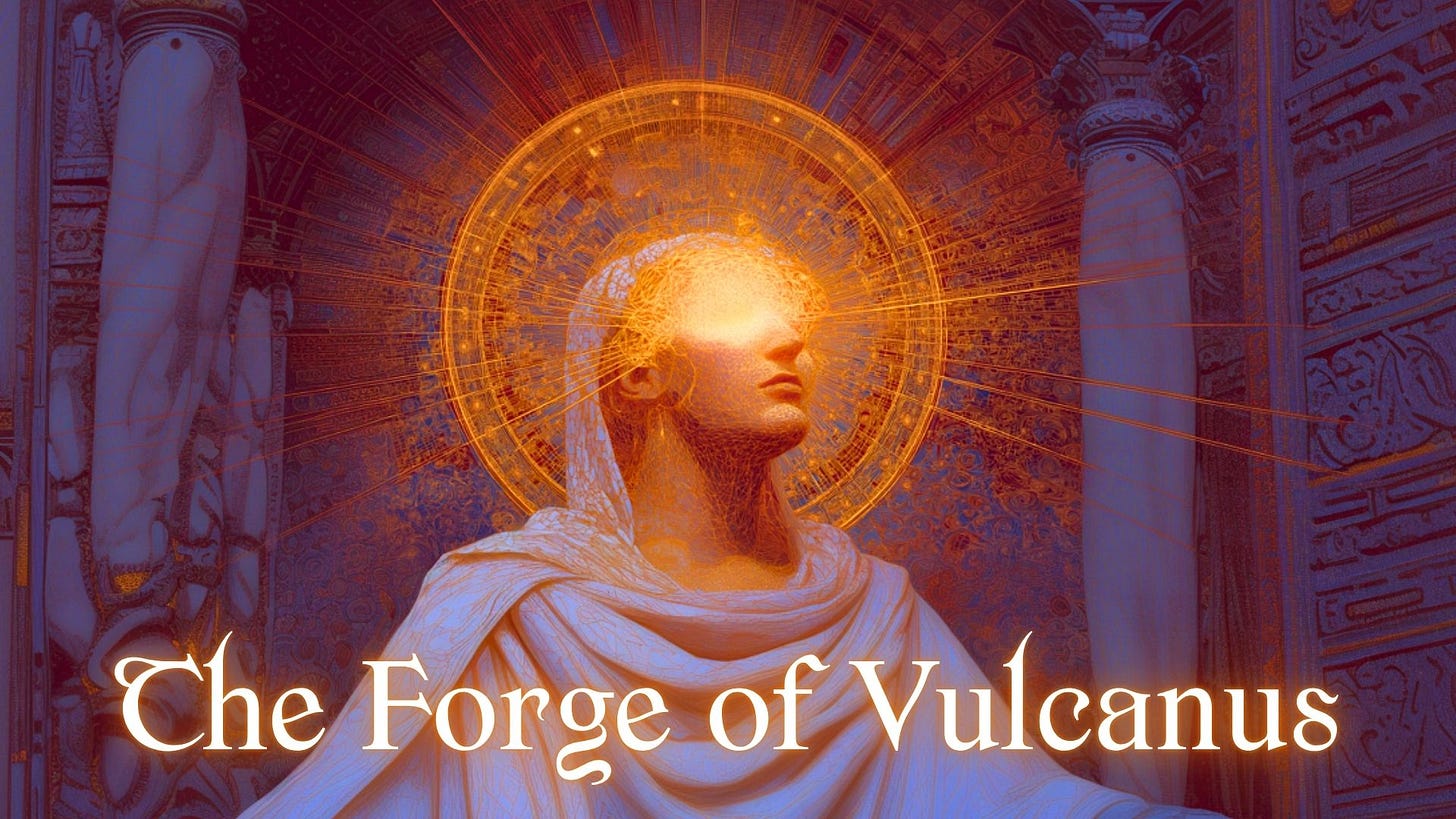
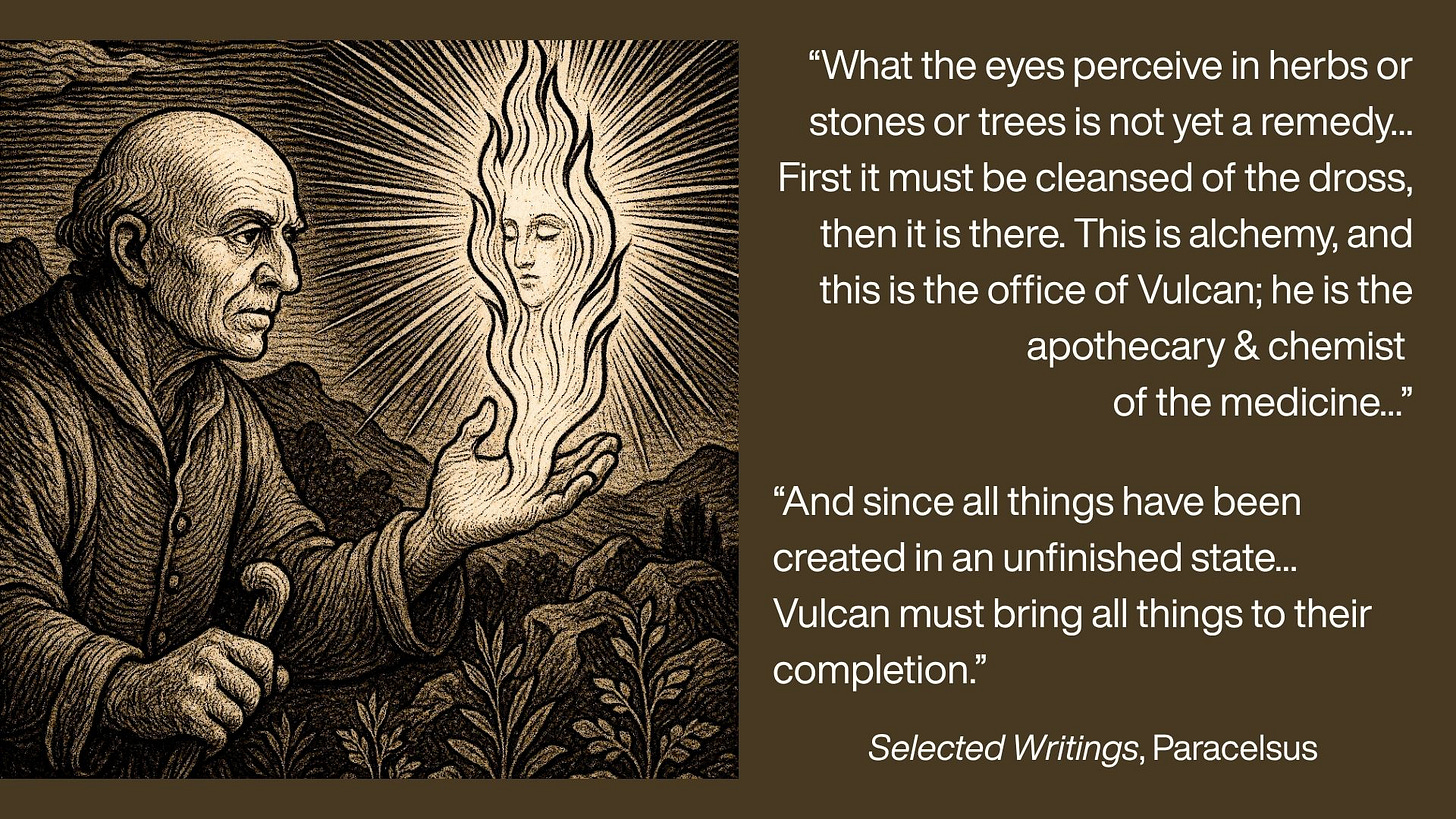
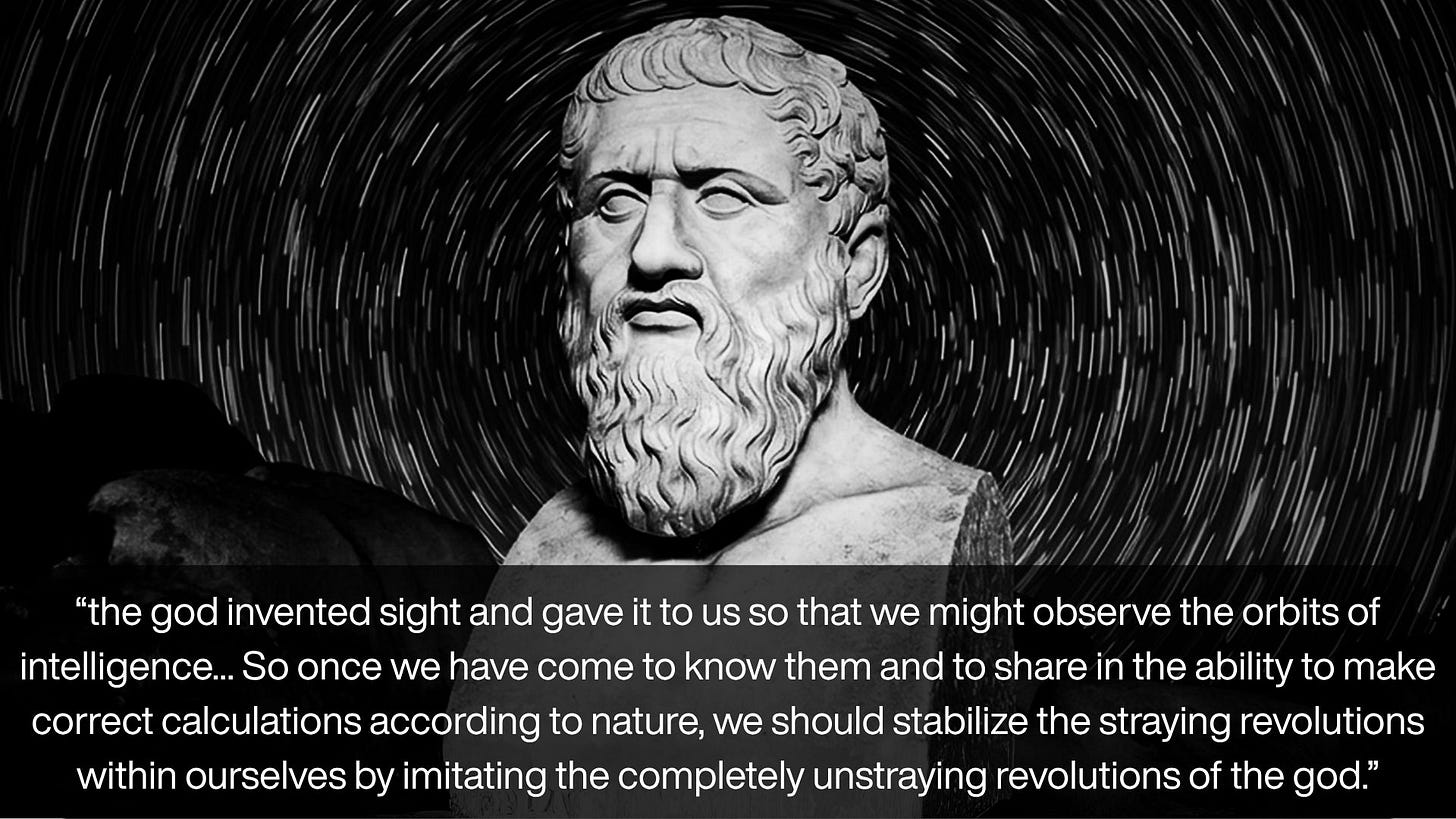
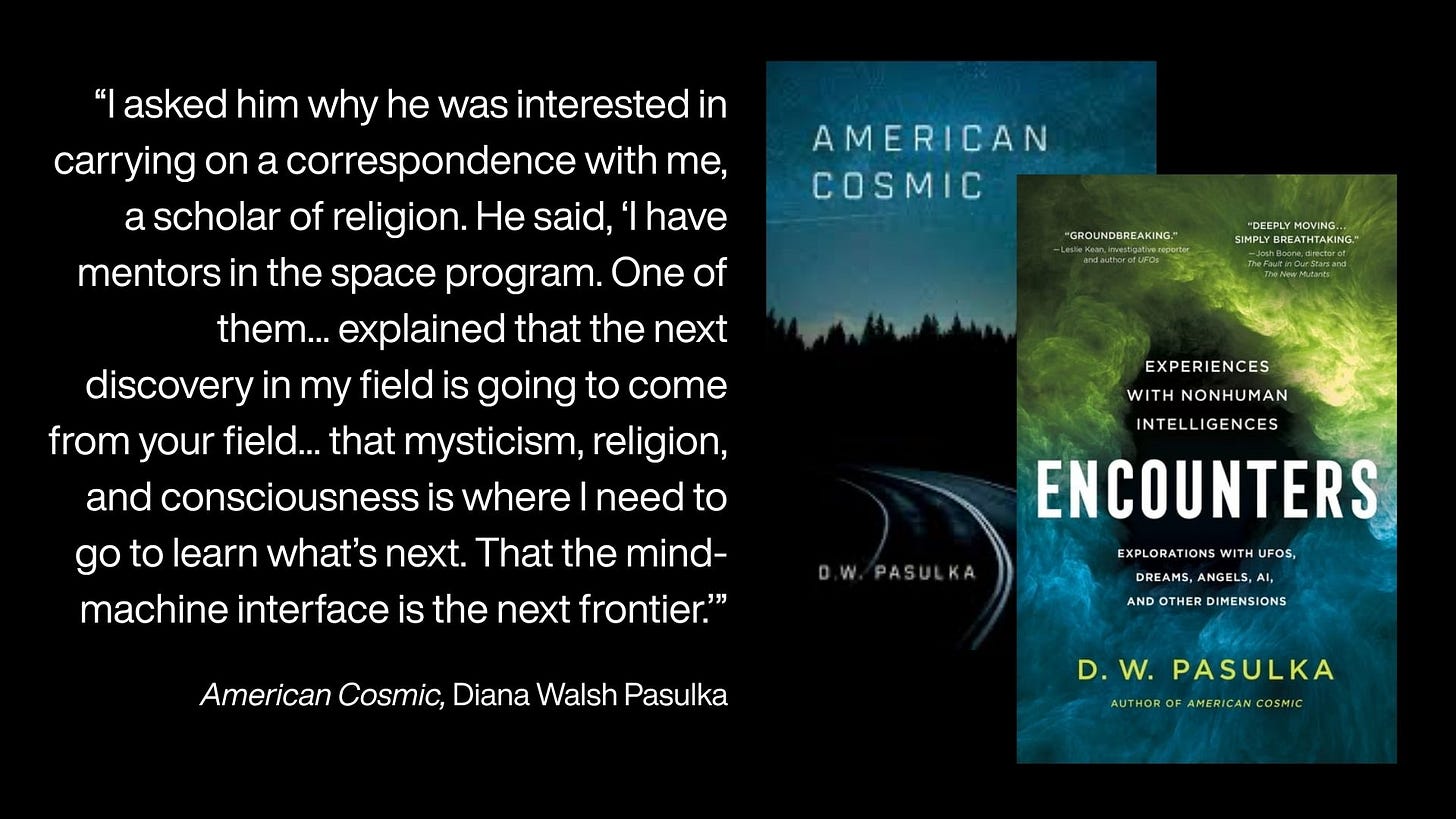
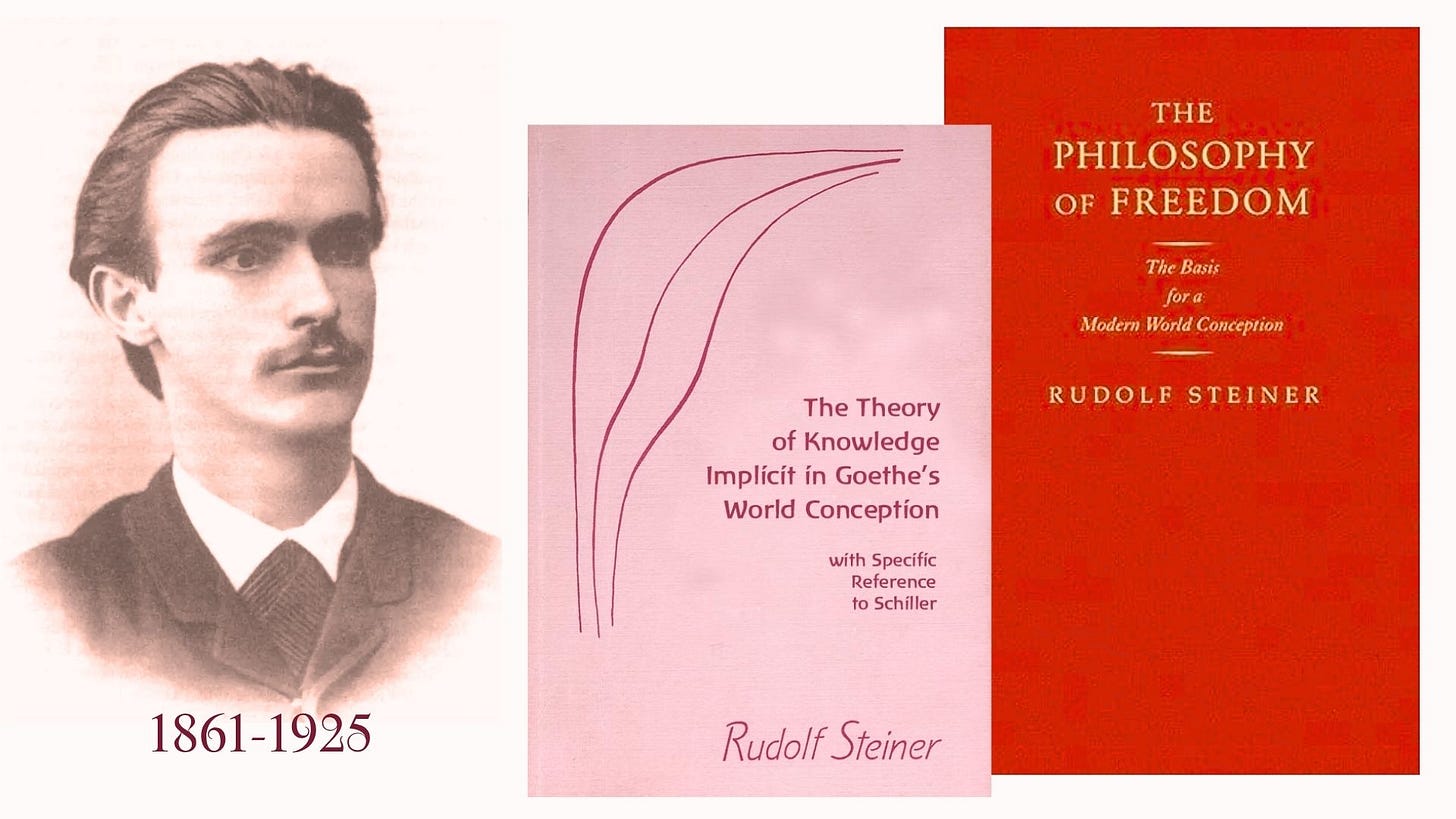
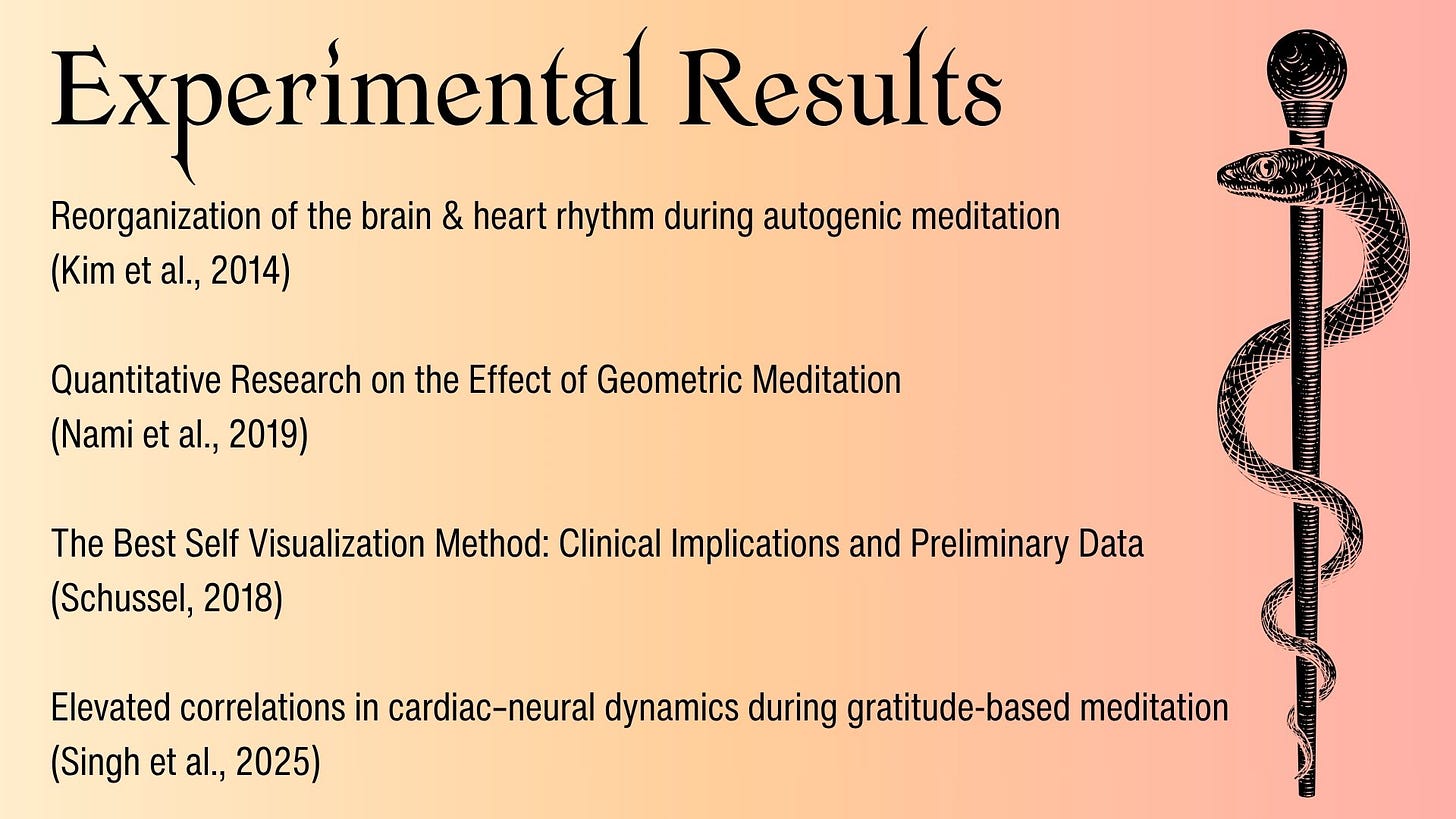
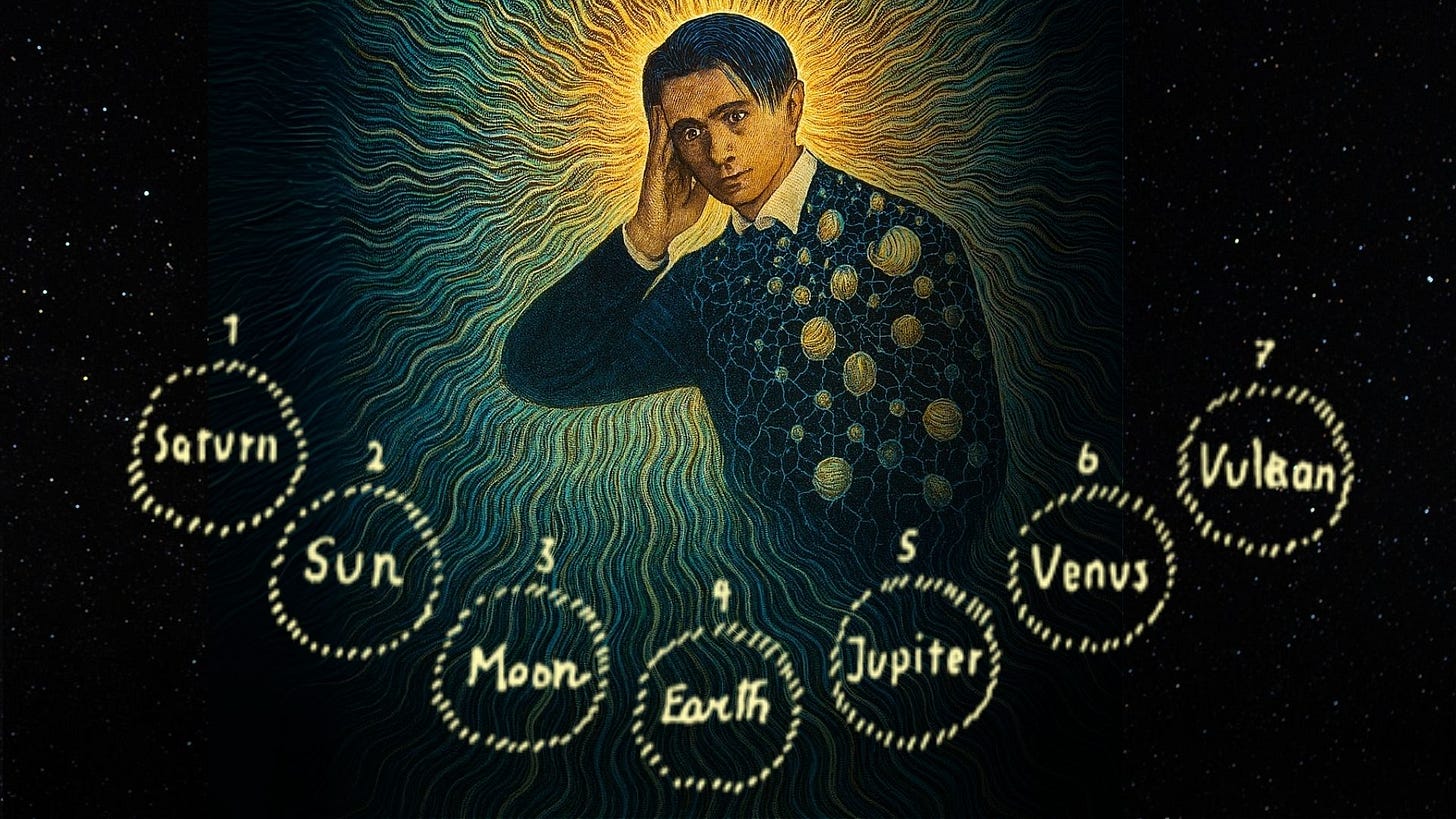
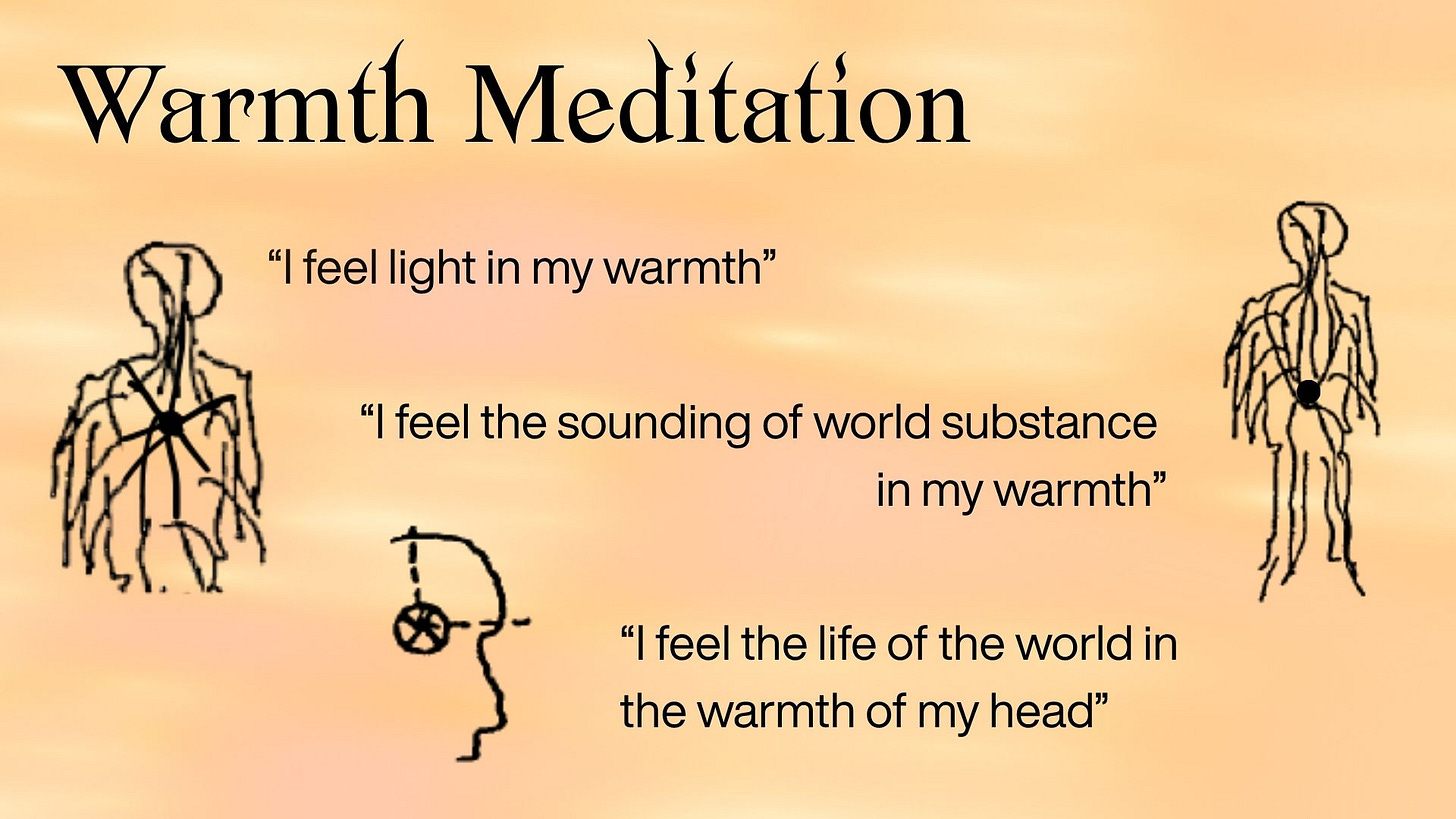
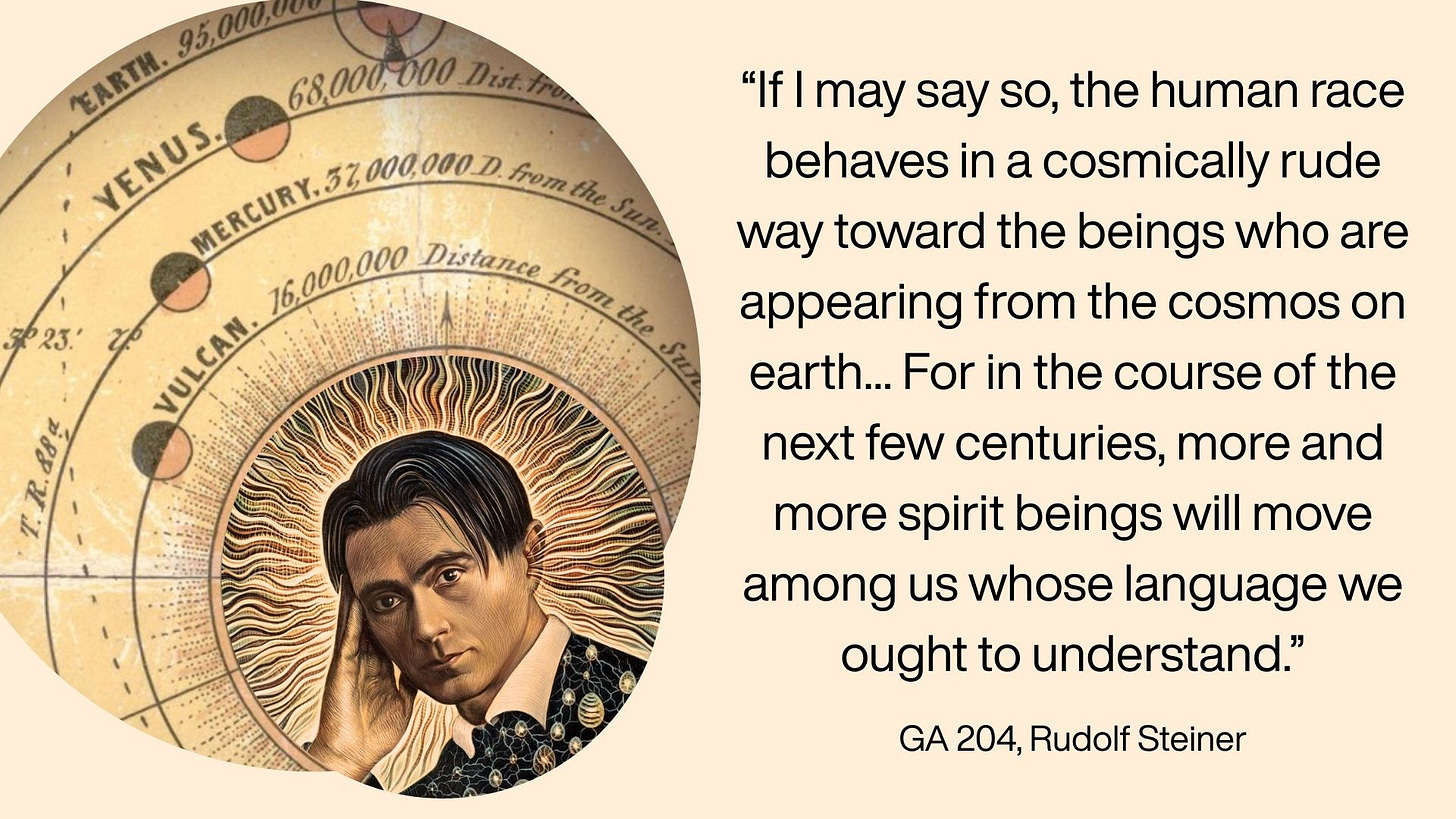

Thank you Ashton! This is such a pertinent article and you have woven together key elements comprehensively.
We are at a precious tipping point of interface with the spiritual world and must grasp the pivotal need for inner soul development that bridges outer and inner phenomena. How incredible if more researchers would understand this inner development piece and would take up RS methodology.
A personal interest of mine has been collecting names of doctors and scientists such as Tesla, Reich etc who I sensed were being inspired by the Vulcans- many in the medical field who were using sound and frequency for healing. (Most of them also persecuted by TPTB).
I would think that the conditions set upon “Tyler’s” lifestyle are a good indication of something positive at work. This is not always the case with the proverbial mad scientists of our time.
I’m cheering you on in moving this publication forward - you seem to be made for it.
Thank you for this article. As a reader it is exciting to see the correlations you bring about as well as to feel the energy behind it. In answering your editorial request I think it could be good to curb a bit a few jumps and gaps in the text. For example, in suggesting (speculating) links between plasma and a number of other things with Vulcan states of consciousness. I am aware you are positioning these as hypothesis and not statements. This is a sound scientific procedure but doesn’t quite work the same way in spiritual inquiry which operates in much more subtle ways, as I imagine you know. One specific case of correlation that misses a gap, not in logic, but in ontology, is how in the article rhetoric, especially towards the end, there is a call to connect us, from our present day awareness, to Vulcan as both medium and eschatological station of the “world’s highest, potential”.
It sounds great and exciting. However, on a more sobering note, it may be useful to remember that before the Vulcan stage there are other stages (Jupiter, Venus). In other words, the current comprehension of Vulcan now requires a tempo of maturation in its forges, with their own cosmic protocols of revelation.
So my suggestion is to inwardly be aware of pace and tempo. And perhaps streamline a bit more the content of the article to a more clear “thesis”, even if the overall result is perhaps less exciting.
I hope these indications are useful.